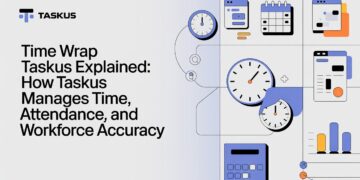Employees are essential to a company’s success, and for a company to succeed, all its employees must move in the same direction. Employees can get there with the aid of performance management. Performance management is a continuous process between a manager and an employee that helps the company achieve its strategic goals by preserving and enhancing the performance of its workforce. It aids businesses in expanding their success and maintaining an advantage over rivals.
Managers and employees work together in a communication-based process to plan, monitor, and review a worker’s objectives, long-term goals, job leveling matrix, and contributions to the company. It involves tracking, analyzing, and managing progress to raise internal and external performance levels.
A sound performance management system should help employees develop, support, and enhance their performance while aligning a team with the business objectives.
Your priority should always be your employees’ best interests come first for managers because a happy team and content perform better than one that feels unappreciated and undervalued.
SELECTION OF THE APPROPRIATE PERFORMANCE MANAGEMENT TECHNIQUE
Performance management covers many factors relating to a team’s effective operation, and numerous approaches can be taken to address a particular problem. Selecting the appropriate strategy for each situation is crucial.
For business owners, employee attrition is a significant challenge. Employees’ annual salary is typically lost when they leave their job, and it costs more to hire a replacement. Additionally, the procedure takes a long time. Retaining current employees is always given priority. Knowing your employees is the first step in maintaining them. You can better comprehend the employee experience during the first 90 days by using a 90-Day Review Template. If You Know More About the 90-day review template, check It https://www.effy.ai/blog/90-day-review-template.
Performance management techniques typically address the following:
Monitoring performance – check-ins and meetings
Progress checks – Analyses and reviews
Setting expectations – describing the requirements and how employees can meet them.
Offering incentives – To be acknowledged, rewarded, and to aid in addressing subpar performance.
Continued professional development – meetings, coaching, and mentoring
Making the organizational and individual performance goals clear and using feedback to assess and enhance procedures and performance are two of the most crucial steps.
There are five crucial components to the performance management process. These are as follows:
Goal-setting and planning
Goals must be established, with clear instructions on how they will be measured and deadlines for their completion. With SMART Goals
involvement of management and employees
For reviews to be effective, employees must realize that they are more than just a simple checkbox exercise. The employee must participate, and the manager should be included as well.
feedback and observation
This enables tracking of a person’s performance and gives them control over personal growth. Additionally, it provides the employer with allows the employer to offer assistance and support if the employee needs it to further their objectives. On a monthly or quarterly basis, feedback might be provided.
growth and improvement
Following employee monitoring, it will be necessary to promote further development and improvement. Employees on track to meet their objectives should be pushed to go above and beyond what was initially intended.
Compensation and reward
Employees need to be encouraged in some way to keep achieving and growing if they are to do so. This can include pay raises, bonuses, stock options, additional vacation days, and promotions.
To develop a high-performance culture within a company, it is essential to invest in or develop performance management tools, techniques, and processes. Strong performance at every business level should be the goal for every company, regardless of size.
Businesses must think about the methods that will work best for their size and organizational structure as well as how managing performance arrangements will fit with other corporate policies.
The strategies that will be most effective depending on the company’s requirements; for instance, an engineering firm will likely employ different strategies than a retail establishment. Larger companies will need to consider the number of teams they have and how they can best measure employee performance across the business. Smaller companies may prefer the idea of more informal techniques based on regular face-to-face meetings and individual performance management.
Also Read: Famous Hollywood Celebrity Facts.


















